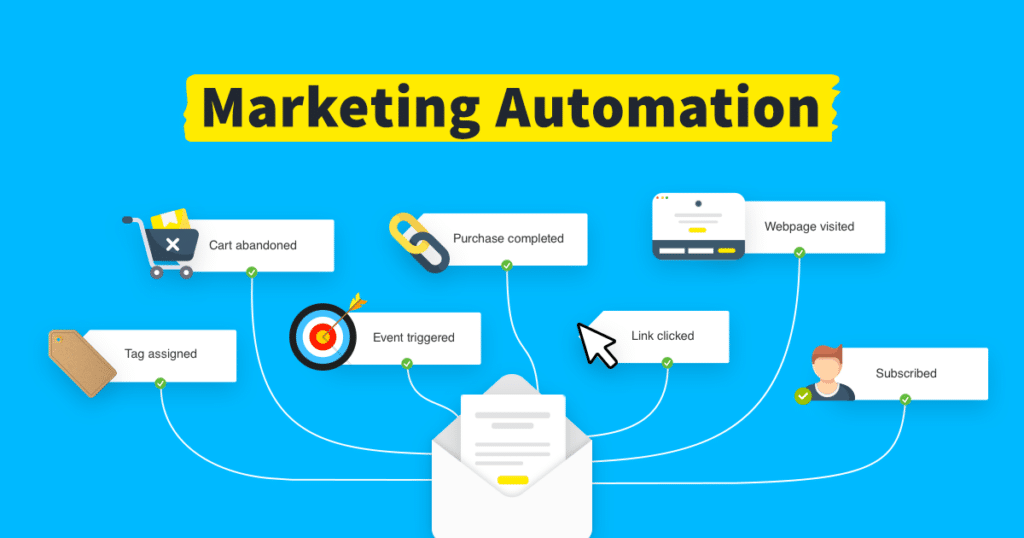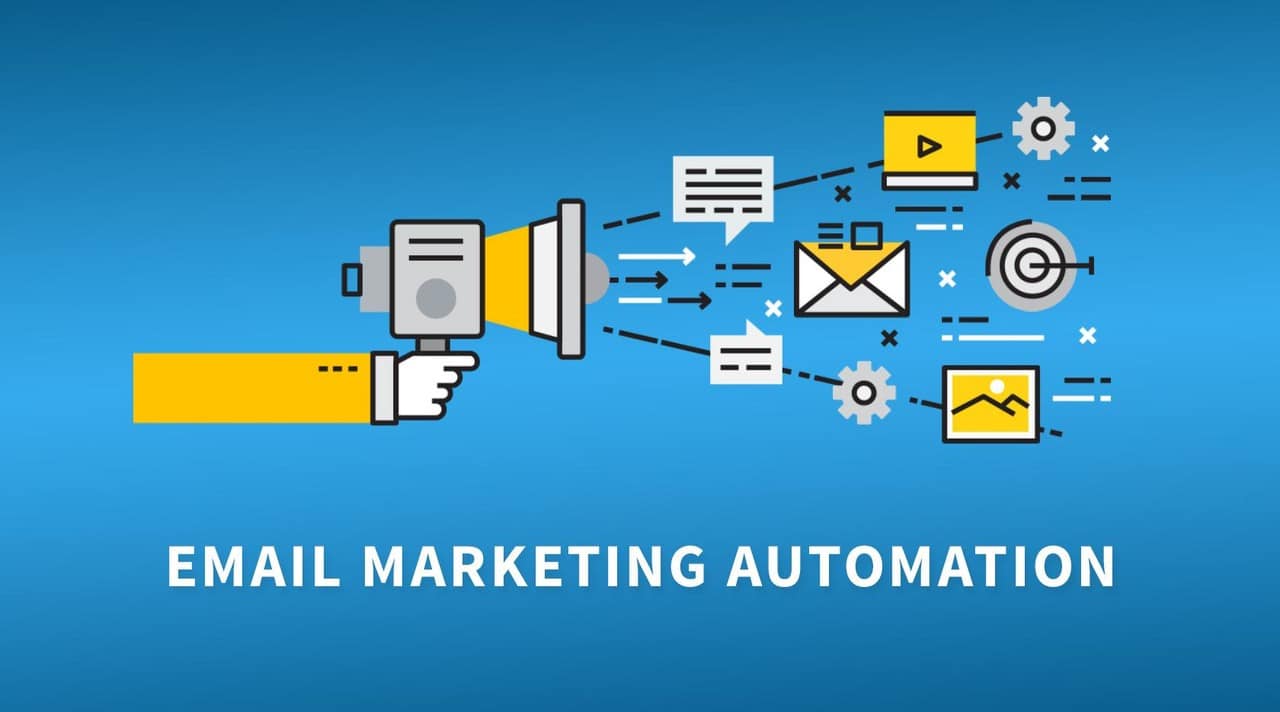In today’s digital landscape, email marketing automation has become an essential tool for businesses of all sizes. This powerful technology allows companies to send subscribers personalized, relevant, and timely emails without manual intervention.
By leveraging email marketing automation, businesses can build better relationships with their audience, increase engagement, and drive conversions.
In this blog, we will dive into what email marketing automation is, explore its benefits, and provide actionable insights on setting up and optimizing your email marketing automation strategy.
What is Email Marketing Automation
At its core, email marketing automation refers to the use of software and tools to send emails based on predefined triggers and schedules automatically. These triggers can be user actions, such as signing up for a newsletter, abandoning a cart, or downloading a resource, as well as time-based events like a subscriber’s birthday or an upcoming sale.
The goal is to deliver the right message to the right person at the right time
Businesses that automate these processes can save time, decrease the risk of human error, and ensure consistent and timely messages. However, email marketing automation is more than simply a time-saving; it is a method of providing a personalized experience to your audience, which may dramatically boost your marketing results.
Benefits of Email Marketing Automation
Implementing email marketing automation can provide a wide array of benefits that enhance the effectiveness of your overall marketing efforts. Here are some of the key advantages:
1. Increased Efficiency
One of the primary advantages of email marketing automation is the opportunity to streamline your marketing activities. By automating routine processes like sending welcome emails or follow-up communications, your staff can devote more time to important objectives. This not only saves time but also enables more consistent communication with your audience.
2. Personalization at Scale
Automated email marketing enables you to send personalized messages to a large audience without the need for manual intervention.
Segmenting your audience and employing dynamic content allows you to adapt your emails to each recipient’s individual needs and interests. This level of customization can result in higher engagement rates and greater client loyalty.
3. Improved Customer Engagement
With email marketing automation, you can create a more engaging customer experience. Automated emails can be triggered by user actions, ensuring that your communications are timely and relevant.
For example, you can set up an abandoned cart email series that reminds customers of the items they left behind and encourages them to complete their purchases. Such timely interventions can significantly boost conversion rates.
Setting Up Your Email Marketing Automation Strategy
To get the most out of email marketing automation, it’s crucial to develop a well-thought-out strategy. Here’s how you can start:
1. Identifying Your Goals and Objectives
Before diving into the technical setup, it’s essential to define what you want to achieve with your email marketing automation strategy. Are you looking to increase sales, nurture leads, or improve customer retention? Clear objectives will guide your strategy and help you measure success.
- What type of content can they expect in your emails?
- How often should they expect to receive your emails?
- What are the benefits of being a subscriber?
- Can they interact with your brand on other channels? Which ones?
- What does your brand stand for? What are its values?
- What is your brand’s story?
- What action(s) should they take?
2. Segmenting Your Audience
Effective email marketing automation is primarily reliant on audience segmentation. You may send more customized and relevant emails to your subscribers by categorizing them based on characteristics such as behavior, demographics, and purchasing history.
For example, you may establish distinct email campaigns for new consumers and repeat buyers, ensuring that each group receives content that is relevant to them.

3. Creating Targeted Email Campaigns
Once your audience has been segmented, the next stage is to create and launch focused email marketing. These campaigns should be in line with your overall marketing objectives and targeted to the unique demands of each segment.
For example, you could develop a welcome series for new subscribers, a re-engagement campaign for inactive users, or a special offer for returning consumers. The goal is to make sure that each email provides value to the recipient.
Read also: How to Maximize Bookings with Effective Email Marketing for Hotels (+Email Templates)
Choosing the Right Email Marketing Automation Tools
Selecting the right tools is a critical component of your email marketing automation strategy. Here’s what to consider:
Features to Look For
When selecting email marketing automation solutions, you should examine the capabilities that will best complement your strategy. Look for tools that provide powerful segmentation, simple email builders, and advanced analytics.
Other essential features may include A/B testing, CRM connectivity, and the ability to design complicated processes.
Popular Email Marketing Automation Tools
There are several email marketing automation tools available, each with its own strengths. Some of the most popular options include Mailchimp, HubSpot, and ActiveCampaign.
These tools offer a wide range of features that can help you automate your email marketing efforts and achieve your goals. Be sure to evaluate each option based on your specific needs and budget.

Optimizing Your Email Marketing Automation Strategy
To ensure your email marketing automation strategy remains effective, continuous optimization is key. Here are a few ways to optimize your strategy:
1. A/B Testing and Optimization
A/B testing is a very useful technique for improving your email marketing automation efforts.
By experimenting with different subject lines, email content, and send timings, you can determine what resonates most with your audience and adjust your strategy appropriately. Regular testing allows you to keep improving your campaigns and getting greater outcomes.
2. Tracking and Analyzing Performance
To measure the success of your email marketing automation strategy, it’s essential to track key metrics such as open rates, click-through rates, and conversion rates.
Most email marketing automation tools offer built-in analytics that makes it easy to monitor performance. By analyzing this data, you can identify areas for improvement and make data-driven decisions to enhance your strategy.
3. Focus on Key Aspects
- Ensure your subject lines are optimized.
- Don’t over-promote your products.
- Optimize your delivery times.
- Make sure your design is mobile-friendly.
Clear yet concise copy focused on your readers’ personal needs will likely be enough to meet your goals, so when you’re crafting your copy, think of your audience — and use your words wisely.
Conclusion
Email marketing automation is a powerful tool that can transform the way you communicate with your audience. By understanding what is email marketing automation, setting up a clear strategy, choosing the right tools, and continuously optimizing your efforts, you can reap the benefits of more efficient, personalized, and effective email marketing campaigns.
Whether you’re just getting started or looking to refine your existing approach, the key to success lies in staying focused on your goals, understanding your audience, and leveraging the full potential of email marketing automation. With the right strategy in place, you can build stronger relationships with your subscribers, drive more conversions, and ultimately grow your business.

